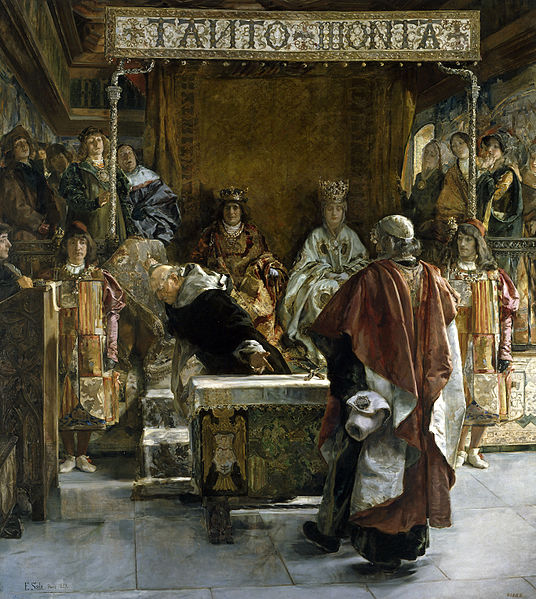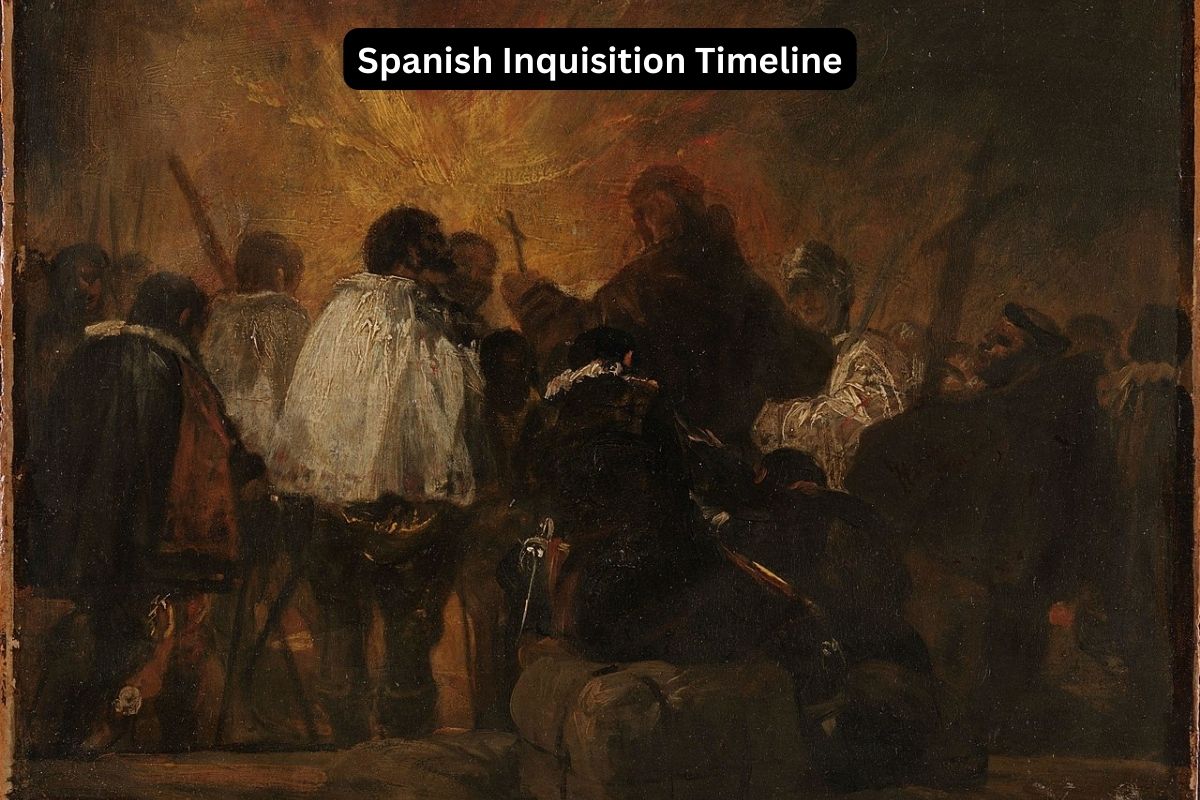Established in 1478 by Ferdinand II of Aragon and Isabella I of Castile, the Spanish Inquisition was a powerful tool wielded by the monarchy to enforce religious orthodoxy and suppress dissent within Spain.
Over the course of centuries, it left an indelible mark on Spanish society, shaping religious identity, political power dynamics, and cultural memory.
This article provides a comprehensive overview of the Spanish Inquisition, tracing its origins, examining its methods, and exploring its enduring legacy in the modern world.
From its establishment to its eventual dissolution, the Spanish Inquisition stands as a complex and contentious chapter in the history of Spain and Europe, offering valuable insights into the intersection of religion, power, and human rights.
| Year | Event |
|---|---|
| 1478 | Establishment of the Spanish Inquisition by Ferdinand II of Aragon and Isabella I of Castile. |
| 1480 | Appointment of the first Inquisitor General, Tomas de Torquemada. |
| 1481-1492 | Commencement of Spanish Inquisition activities, targeting conversos, moriscos, and heretics. |
| 1492 | Issuance of the Alhambra Decree, ordering the expulsion of Jews from Spain. |
| 1499-1500 | Reorganization of the Spanish Inquisition, granting more power to the monarchy. |
| 1516 | Spanish Inquisition becomes an independent tribunal under the Spanish monarchy. |
| 1542 | Establishment of the Suprema, centralizing the Inquisition’s power. |
| Late 16th to early 17th centuries | Peak activity of the Spanish Inquisition, targeting various groups for heresy. |
| Early 19th century | Decline of the Spanish Inquisition due to political and social changes. |
| 1834 | Official disbandment of the Spanish Inquisition by decree during the reign of Isabella II. |
Timeline of the Spanish Inquisition
1478: Establishment of the Spanish Inquisition by Ferdinand II of Aragon and Isabella I of Castile
In 1478, Ferdinand II of Aragon and Isabella I of Castile established the Spanish Inquisition with the papal bull “Exigit Sinceras Devotionis Affectus” issued by Pope Sixtus IV.
Also Read: Facts About the Spanish Inquisition
This decision was primarily motivated by the desire to maintain religious unity within their realms, as well as to combat perceived threats to Catholic orthodoxy.
1480: Appointment of the first Inquisitor General, Tomas de Torquemada
In 1480, Tomas de Torquemada was appointed as the first Inquisitor General of the Spanish Inquisition. Torquemada played a crucial role in shaping the policies and practices of the Inquisition, advocating for strict measures against heresy and non-conformity.
Also Read: Timeline of the Spanish Monarchy
Under his leadership, the Inquisition became known for its harsh methods of interrogation, torture, and punishment.

1481-1492: Commencement of Spanish Inquisition activities, targeting conversos, moriscos, and heretics
The period between 1481 and 1492 marked the beginning of active operations by the Spanish Inquisition.
Targeting primarily conversos (Jews who converted to Christianity) and moriscos (Muslims who converted to Christianity), as well as individuals suspected of heresy or blasphemy, the Inquisition conducted investigations, trials, and executions across Spain.
This era saw the establishment of tribunals in various cities and regions, leading to widespread fear and persecution among religious minorities and dissenters.
1492: Issuance of the Alhambra Decree, ordering the expulsion of Jews from Spain
In 1492, Ferdinand II of Aragon and Isabella I of Castile issued the Alhambra Decree, also known as the Edict of Expulsion. This decree ordered the expulsion of all Jews from the Kingdoms of Castile and Aragon, which encompassed most of Spain.
The expulsion of the Jewish population was a significant event in Spanish history and had profound consequences for both Spain and the Jewish community.
1499-1500: Reorganization of the Spanish Inquisition, granting more power to the monarchy
Between 1499 and 1500, the Spanish Inquisition underwent a reorganization under the direction of King Ferdinand II. This reorganization aimed to strengthen the power and authority of the Inquisition, granting it more autonomy from papal oversight.
Ferdinand II sought to consolidate control over religious matters within Spain and viewed the Inquisition as a tool for achieving this goal.

1516: Spanish Inquisition becomes an independent tribunal under the Spanish monarchy
In 1516, the Spanish Inquisition was officially established as an independent tribunal under the control of the Spanish monarchy. Prior to this, the Inquisition had operated under the authority of the Crown and the papacy.
By becoming an independent institution, the Spanish Inquisition gained greater flexibility and authority in its pursuit of religious orthodoxy and the suppression of heresy. This move further solidified the Inquisition’s role as a central pillar of religious and political control in Spain.
1542: Establishment of the Suprema, centralizing the Inquisition’s power
In 1542, the Suprema, also known as the Council of the Supreme and General Inquisition, was established. This council served as the highest governing body of the Spanish Inquisition, centralizing its power and authority.
The Suprema was responsible for overseeing the activities of the various regional tribunals, coordinating inquisitorial efforts, and ensuring conformity to Inquisition policies and procedures. Its establishment further strengthened the Inquisition’s control over religious matters in Spain.
Late 16th to early 17th centuries: Peak activity of the Spanish Inquisition, targeting various groups for heresy
During the late 16th and early 17th centuries, the Spanish Inquisition reached its peak in terms of activity and influence. This period saw a significant escalation in the persecution of individuals suspected of heresy, blasphemy, or religious non-conformity.
The Inquisition targeted not only conversos and moriscos but also Protestants, witches, intellectuals, and others deemed threatening to Catholic orthodoxy.
Thousands of individuals were subjected to investigations, trials, and often severe punishments, including imprisonment, torture, and execution.

Early 19th century: Decline of the Spanish Inquisition due to political and social changes
The early 19th century witnessed the decline of the Spanish Inquisition due to political and social changes in Spain and Europe. Enlightenment ideals, liberal reforms, and the rise of secularism challenged the authority and legitimacy of the Inquisition.
Additionally, the Napoleonic Wars and the subsequent Peninsular War disrupted the stability of the Spanish monarchy and weakened its control over the Inquisition. As a result, the Inquisition’s influence waned, and its activities diminished.
1834: Official disbandment of the Spanish Inquisition by decree during the reign of Isabella II
In 1834, the Spanish Inquisition was officially disbanded by a decree issued by regent Maria Christina of the Two Sicilies during the reign of Isabella II. This decree marked the end of centuries of inquisitorial activity in Spain.
The disbandment of the Inquisition was part of broader efforts to modernize and liberalize Spanish society, reflecting changing attitudes towards religious tolerance, human rights, and the separation of church and state. Though officially abolished, the legacy of the Spanish Inquisition continued to shape Spanish culture and memory for years to come.
